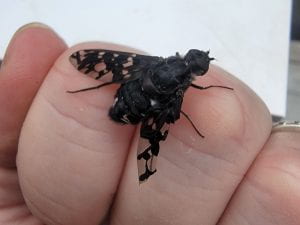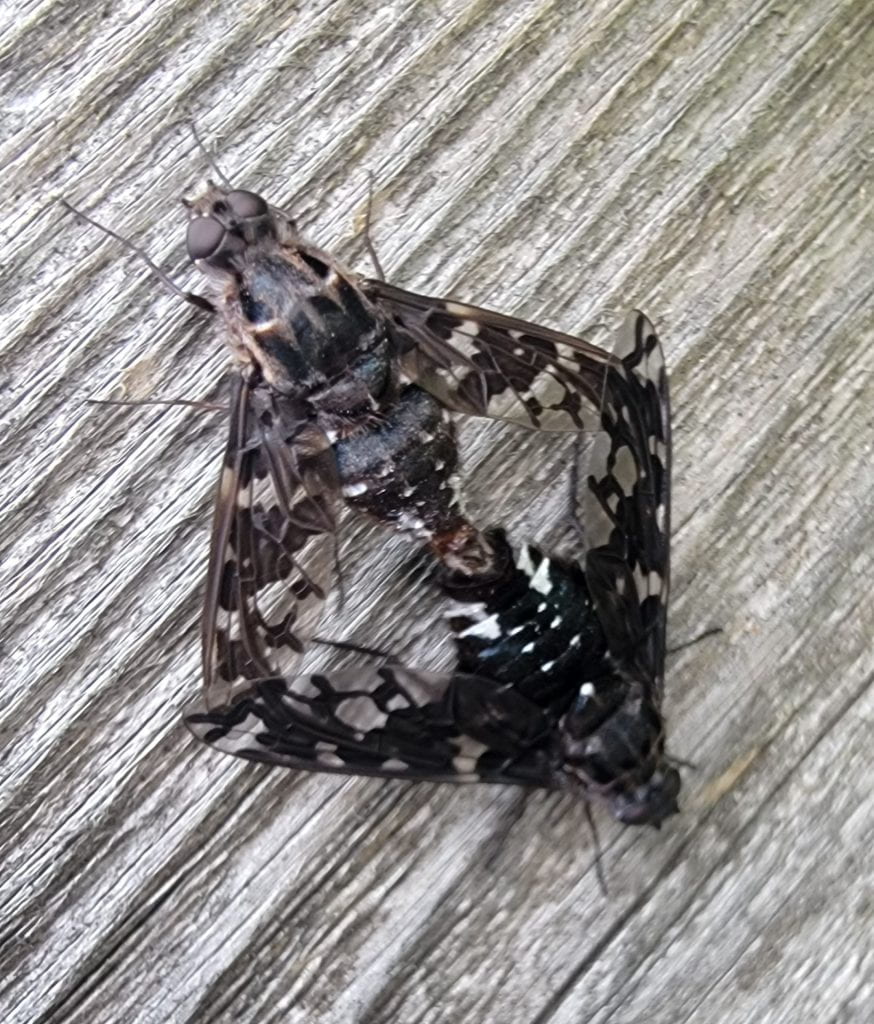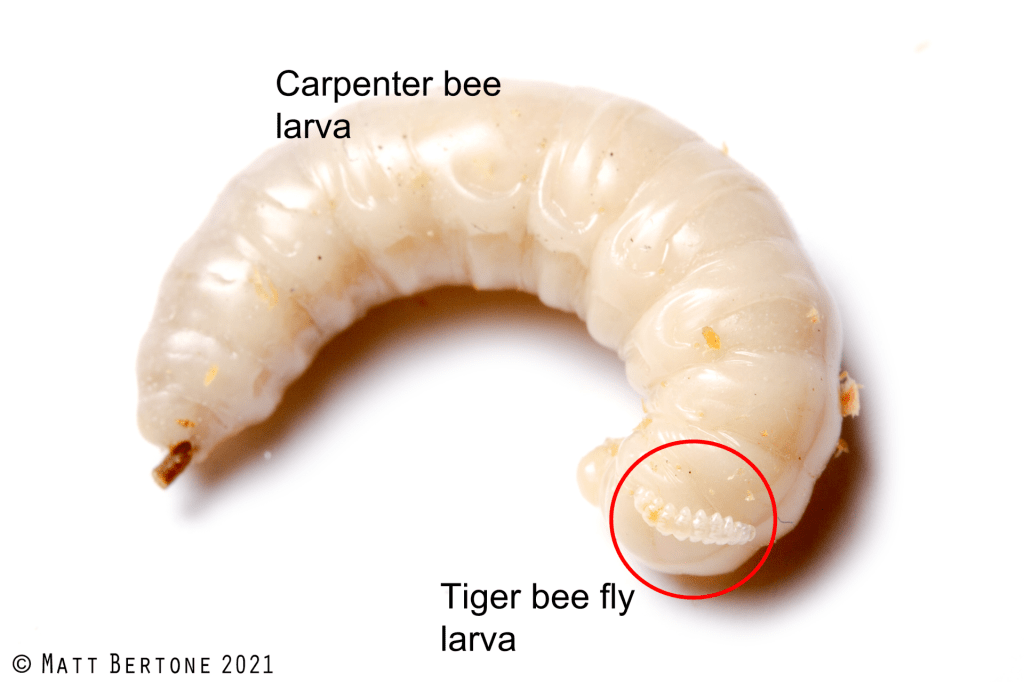On any warm summer day, you might have noticed a large dark colored insect jetting about the outside of your home or around the deck. They seem aggressive. They have a startling buzz…. And they will fly right at you but avoid crashing, rather landing gently on the structure in plain sight. They look a bit menacing. If all this adds up, you might have seen a tiger bee fly. That name even sounds menacing, but these flies are anything but dangerous to people and pets.
The tiger bee fly has a very cool scientific name – Xenox tigrinus. This rather large fly, which can be over an inch long, is black with some white flecks on the abdomen and has black wings with clear spots arranged in a beautiful design. At rest, it holds the wings out in a triangular form.

This gentle fly is anything but gentle with its prey. They can’t sting or bite people or pets. We commonly see tiger bee flies around structures because they prey on carpenter bees. In fact, tiger bee flies help control carpenter bees, but in a rather grim way.

After mating, female tiger bee flies hover around the dime-sized nest openings of carpenter bees and lay their eggs inside the opening. Bee fly larvae are parasites of carpenter bee larvae and once they hatch the vigorous fly larvae wander inside the gallery until they find young carpenter bees, which look like cream-colored maggots. The tiny fly larva attaches itself to the much larger bee larva and sucks it dry as it develops.

This natural relationship sounds gruesome, but the tiger bee fly is a form of biological control for carpenter bees, which are thought to nest almost exclusively in man-made structural wood. In addition to being parasites of a major wood destroying pest species, tiger bee flies are important pollinators. Their nectar preferences include many of the mid to late summer native ornamental flowers. Hopefully you’ve planted a few of those!

So, if you encounter an insect that hangs around your deck or fence, take a closer look and see if you’ve found a tiger bee fly. If so, you probably have carpenter bees and a partner in their management.
For more information about the management of carpenter bees see The NY State IPM Program’s Carpenter Bee webpage.